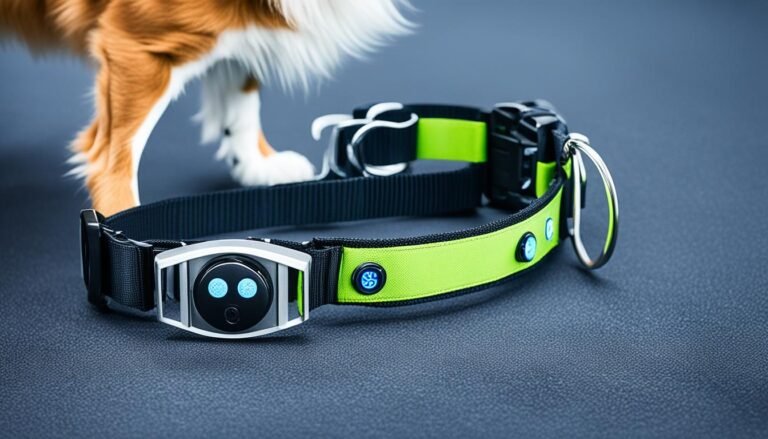How to Train Your Dog with a Shock Collar
Are you struggling to train your dog? Does your furry friend have behavioral issues that you’re finding challenging to address? If so, you’re not alone. Many dog owners face similar difficulties when it comes to training their pets. But don’t worry, there is a solution that can help you achieve the well-behaved dog you’ve always dreamt of – a shock collar!
Now, before you start picturing a cruel and painful experience for your beloved pup, let’s debunk some myths. Shock collars are not intended to hurt dogs; instead, they are designed to capture their attention and redirect their behavior. Think of it as a way to communicate with your dog in a language they understand.
Imagine this: you’re out for a walk with your dog, and suddenly they spot a squirrel and take off, completely ignoring your frantic calls for them to come back. It’s a frustrating situation that many dog owners have experienced, and it can be dangerous if your dog runs into traffic or gets lost. But with a shock collar, you have the power to regain control and keep your dog safe.
By using a shock collar, you can train your dog to respond to commands even when distractions are present. The electrical shock emitted is similar to static electricity, so it won’t cause any harm to your furry friend. Instead, it is a gentle reminder that redirects their behavior and helps them understand what you expect from them.
In this article, we will explore the best practices for using shock collars, understand the arguments for and against their use, learn effective training techniques, and discuss the benefits and limitations of shock collar training. So, if you’re ready to take your dog’s training to the next level and create a stronger bond with your canine companion, let’s dive in!
Understanding Shock Collar Arguments
When it comes to training your dog, shock collars have become a topic of debate among trainers and dog owners alike. Proponents of shock collar training believe that they can be an effective tool for teaching dogs obedience and correcting undesirable behaviors. They argue that shock collars provide dogs with freedom and control while off-leash, acting as a means of communication between the dog and the owner.
Advocates of shock collars assert that they can be particularly useful in addressing severe behavior problems or correcting behaviors that could potentially jeopardize the dog’s safety. Some trainers even utilize shock collars to teach dogs positive behaviors, such as sitting or staying.
However, opponents of shock collars have raised ethical considerations and concerns about their potential misuse. They argue that shock collars can cause physical and psychological harm to dogs. Instead, they advocate for positive reinforcement training methods that focus on rewarding desired behaviors rather than punishing unwanted ones.
When deciding whether to use a shock collar, it is essential to carefully consider the effectiveness of shock collars in dog training, the potential benefits and limitations, as well as the ethical considerations involved.
To better understand the arguments surrounding shock collar training, let’s take a closer look at the effectiveness of shock collars, the benefits of positive reinforcement training, and the ethical considerations when using shock collars.
Prepare to Use a Shock Collar
Before you start using a shock collar for training your dog, there are a few important steps you need to take to ensure a safe and effective training experience. These steps include proper shock collar fitting and usage, as well as training tips for using a shock collar.
Fitting the Shock Collar Correctly
One of the most crucial aspects of using a shock collar is ensuring it fits your dog properly. The collar should be snug but not uncomfortable, allowing for a secure fit without causing any discomfort to your furry friend. Make sure the contact points on the collar make gentle contact with your dog’s neck.
To achieve a proper fit, it is recommended to have a professional trainer assist you in the process. They can help you assess the collar size and adjust it accordingly to ensure maximum safety and effectiveness during training.
Acclimating Your Dog to the Shock Collar
Introducing your dog to the shock collar is an important step in remote training with shock collars. It is best to start by acclimating your dog to the collar before turning it on.
Begin by putting the collar on your dog without activating any stimulation. Allow your dog to wear the collar for short periods each day, gradually increasing the duration as they become more comfortable. This gradual introduction helps create a positive association with the collar, preventing confusion and fear.
Starting with Low Stimulation Levels
When you are ready to start using the shock collar, always begin with the lowest level of stimulation. This allows your dog to adapt to the sensations gradually. It’s important to remember that the purpose of the shock collar is not to cause pain, but to capture your dog’s attention and redirect their behavior.
By starting with low stimulation and assessing your dog’s response, you can determine the appropriate level needed for effective training. Keep in mind that every dog is unique, so it may require some trial and error to find the right stimulation level that works best for your furry companion.
Proper preparation and usage of a shock collar are essential for successful training outcomes. By ensuring a proper fit, familiarizing your dog with the collar, and starting with low stimulation levels, you can create a safe and positive training experience for both you and your furry friend.
Effective Training Techniques with a Shock Collar
When it comes to training your dog with a shock collar, it’s crucial to employ effective techniques that prioritize their well-being. By starting with basic obedience commands they already know, like “sit” or “stay,” you can establish a foundation of understanding. Begin the training by using the lowest level of stimulation and closely observe your dog’s response.
If your dog doesn’t respond to the initial level, gradually increase the stimulation until you find the recognition point that elicits a response. Remember, the goal is not to punish or cause harm, but rather to use the shock collar as a communication tool. Use it to reinforce commands and redirect behavior, rewarding positive actions with praise or treats.
By combining the shock collar training with positive reinforcement techniques, you can create a balanced and effective approach. This ensures that your dog understands the desired behaviors and responds well to the training sessions. With time and consistency, your dog will become more receptive to the shock collar as a training aid.

Implementing these techniques requires proper shock collar fitting and usage. Before starting the training, ensure that the collar is snug but comfortable for your dog, with the contact points making gentle contact with their neck. It’s highly recommended to seek assistance from a professional trainer to ensure correct fitting and usage.
Benefits and Limitations of Shock Collar Training
When considering shock collar training for your dog, it’s important to understand the potential benefits and limitations associated with this method. The effectiveness of shock collars in dog training has been a topic of debate among trainers and dog owners. However, when used responsibly and with proper considerations, shock collar training can offer some advantages.
Benefits of Shock Collar Training
- Improved Off-Leash Control: One of the significant benefits of shock collar training is its potential to enhance off-leash control. The collar serves as a communication tool between you and your dog, allowing you to provide guidance and reinforcement even at a distance.
- Addressing Severe Behavior Problems: Shock collar training can be particularly useful in addressing severe behavior problems that may require immediate intervention. It can help curb behaviors that could be dangerous or harmful to your dog and those around them.
- Enforcing Positive Behaviors: Shock collars can also be effective when used to reinforce positive behaviors. By pairing the electrical stimulation with desired actions and rewarding them, you can communicate to your dog what behaviors are expected and desired.
Ethical Considerations When Using Shock Collars
While there are potential benefits to shock collar training, it is crucial to approach it with ethical considerations in mind. Remember that shock collars deliver an electrical stimulation that may cause discomfort or distress to your dog. Therefore, it is vital to prioritize your dog’s well-being and use shock collars responsibly.
- Responsible Usage: It is important to use shock collars responsibly, ensuring that they are applied correctly and following the manufacturer’s guidelines. Always start with the lowest level of stimulation and increase gradually only if necessary.
- Consider Your Dog’s Sensitivity: Each dog is unique, and their sensitivity to the electric stimulation may vary. Take into account your dog’s temperament, age, and any preexisting medical conditions when deciding to use a shock collar.
- Consult with a Professional Trainer: To ensure the ethical use of shock collars, it is advisable to seek guidance from a professional dog trainer. They can provide you with the necessary knowledge and expertise to use shock collar training effectively and safely.
Keep in mind that shock collar training may not be suitable for every dog or training need. It is essential to assess your individual circumstances and consult with a professional to determine whether shock collar training is appropriate for your dog.

img {
display: block;
margin: 0 auto;
max-width: 100%;
height: auto;
margin-top: 20px;
margin-bottom: 20px;
}
Conclusion
Using a shock collar as a training tool can be an effective method to address behavioral issues and reinforce positive behavior in dogs. When used responsibly and in conjunction with proper fit and ethical considerations, shock collar training can provide a means of communication between you and your furry companion.
However, it’s essential to remember that shock collar training should always be complemented with positive reinforcement techniques. Rewarding desired behaviors with praise or treats helps create a well-rounded and successful training approach that focuses on encouraging good behavior rather than solely using punishment.
To ensure the safety and effectiveness of shock collar training, it is highly recommended to collaborate with a professional trainer who can guide you on how to train your dog with a shock collar effectively and safely. Their expertise will ensure that you learn the best practices for using shock collars and that you understand the individual needs and circumstances of your dog.
By combining shock collar training with positive reinforcement and seeking professional guidance, you can maximize the benefits of this training method while always keeping your dog’s well-being at the forefront. Remember, the goal is to create a harmonious and respectful relationship with your furry friend through effective training techniques.






